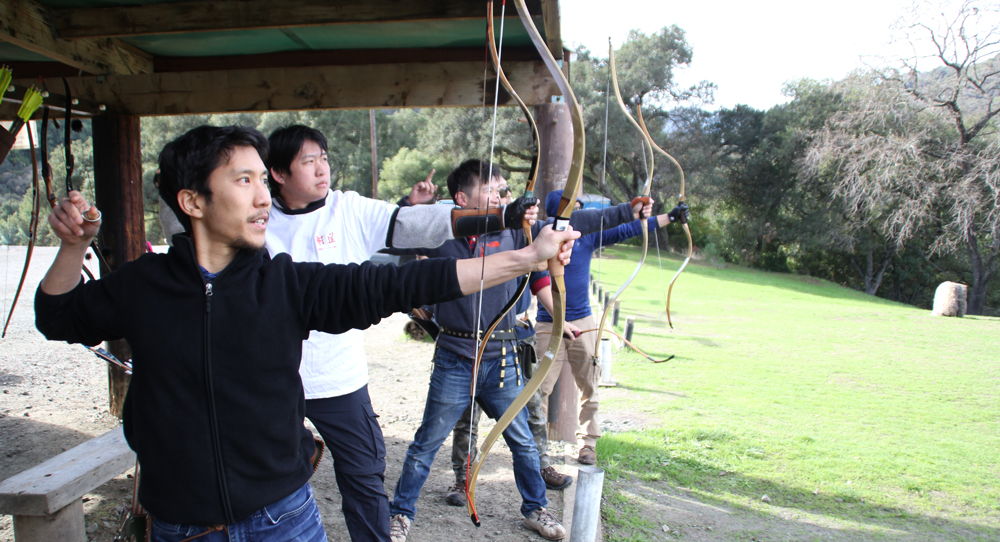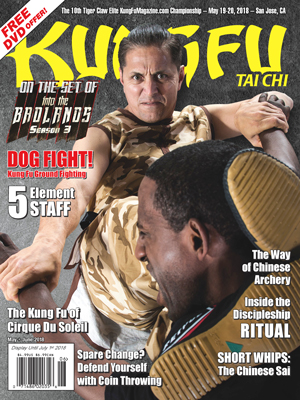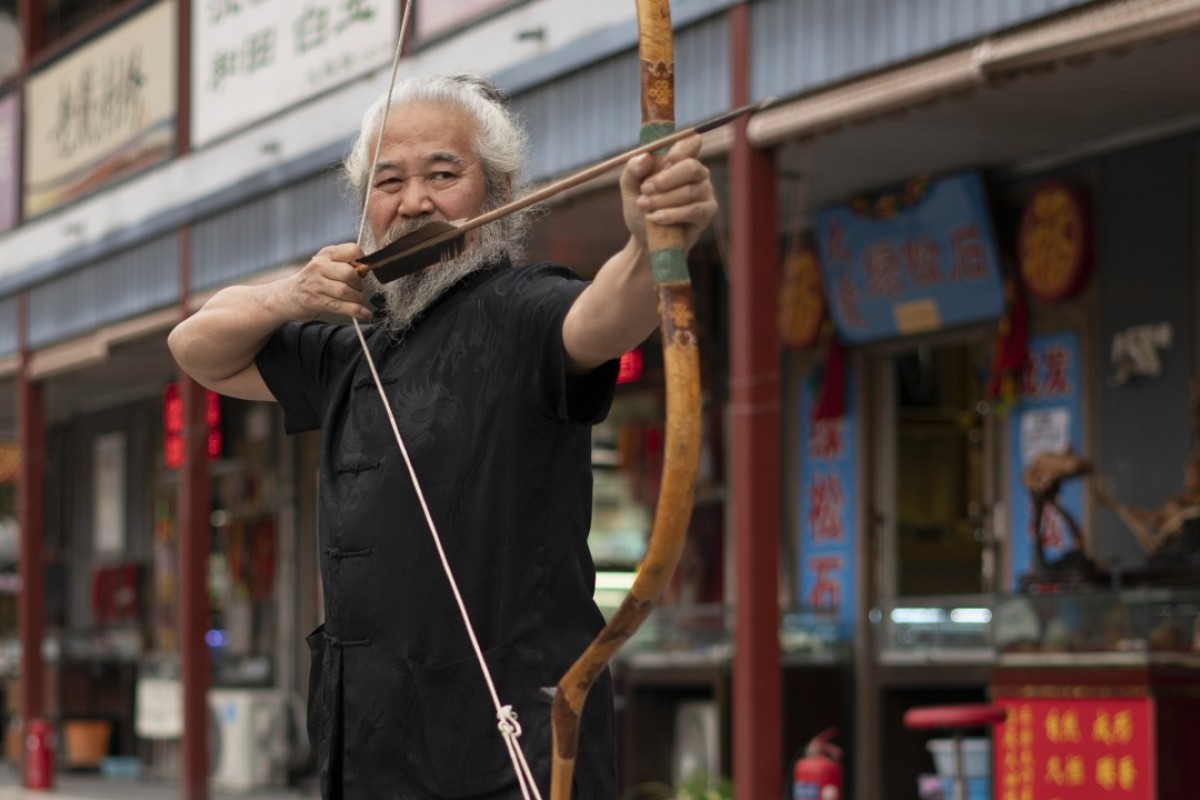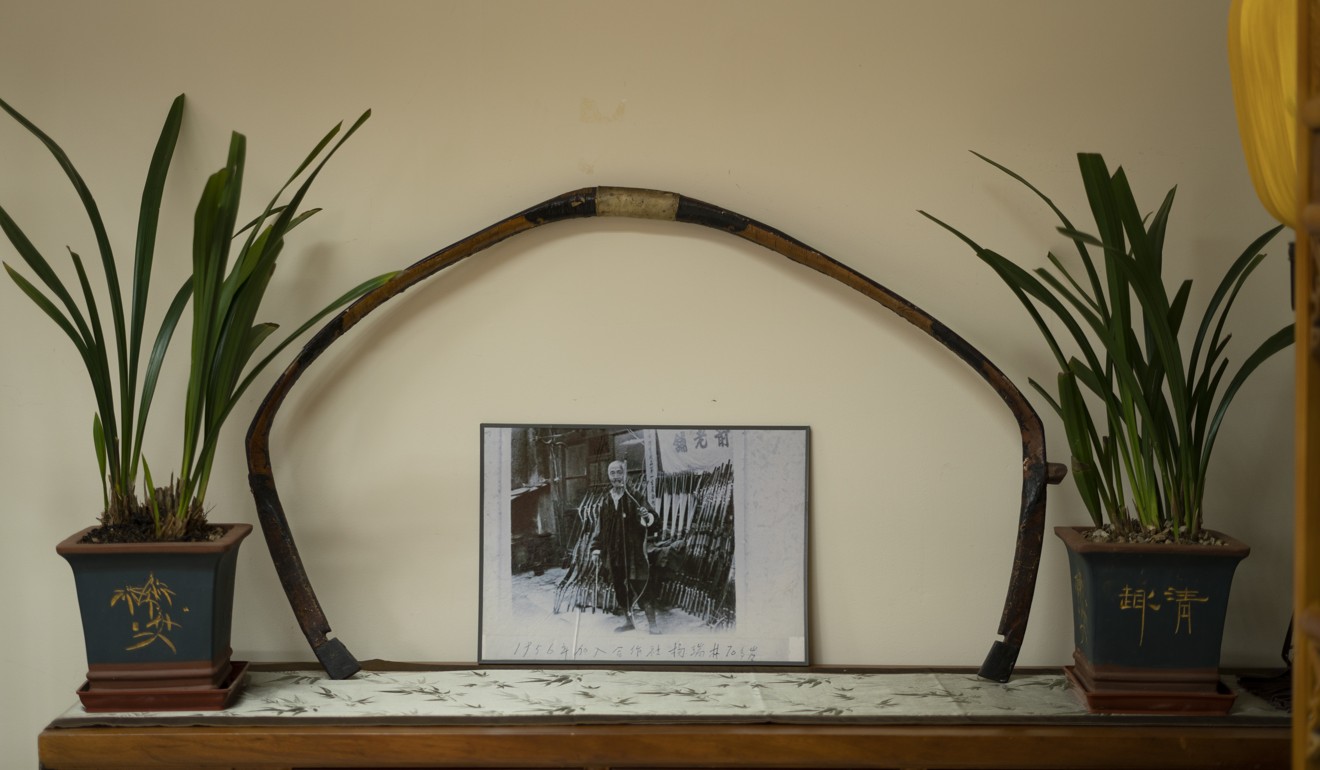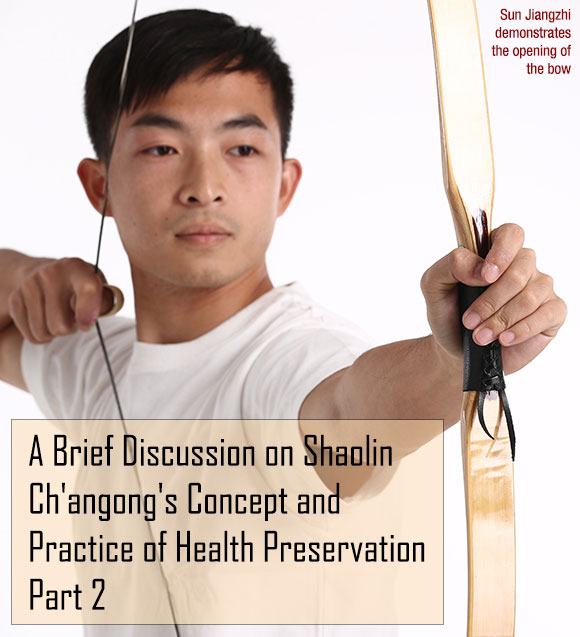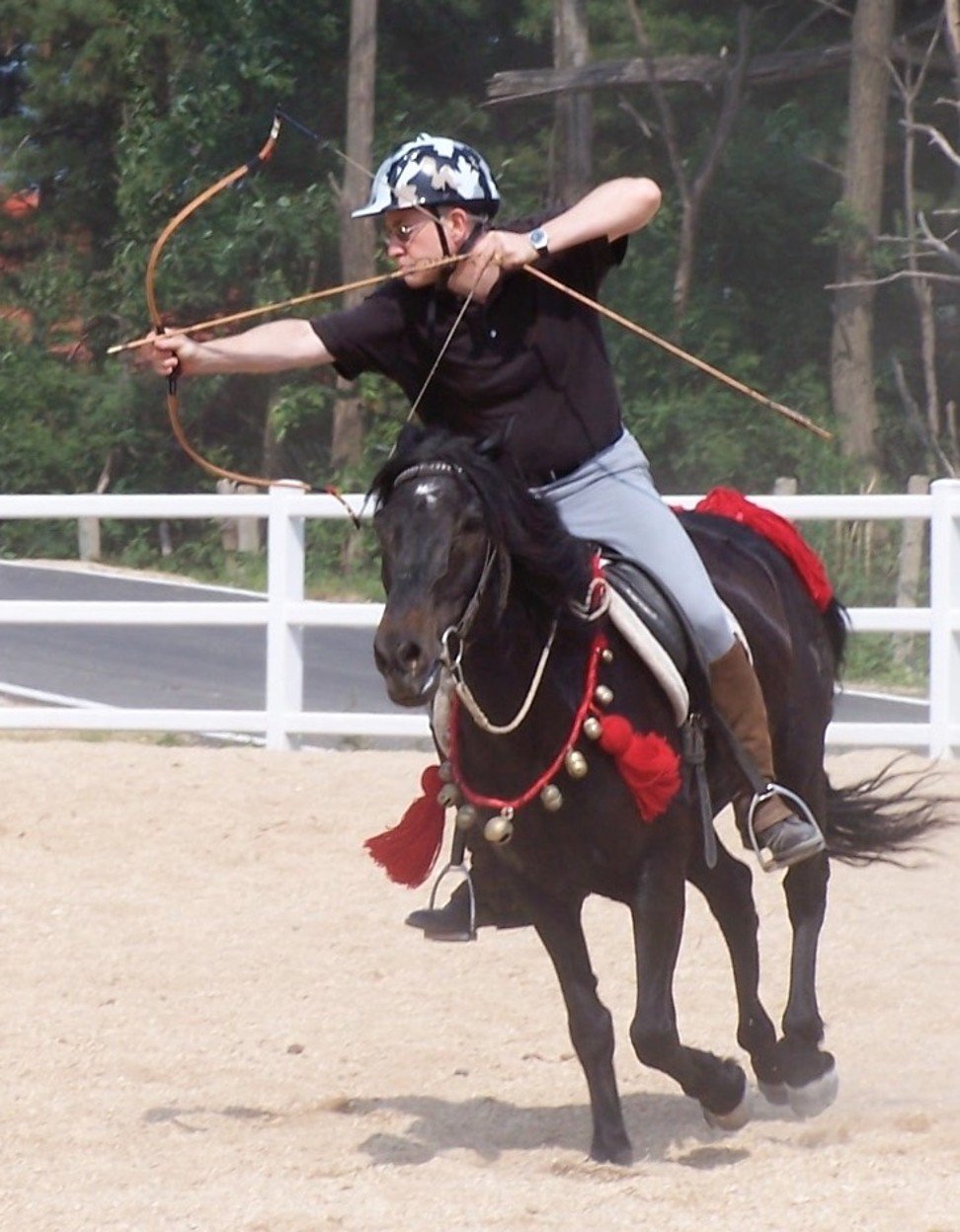
Stephen Selby takes part in an archery contest in 2008. Picture: Stephen Selby
“Xie Sufang [Selby’s Chinese name] initially had misgivings about whether we were the real thing,” Yang recalls of the Hong Kong civil servant’s quest. “At our first meeting, he only wanted to look and listen to us talk about what we were doing. But after going back to Hong Kong and checking, he returned and presented us with an inscribed plaque. It was a sign of his recognition.”
Yang Snr later received acknowledgement of their artisan*ship from the Beijing government, too, in the form of modest support to continue his craft. And five days before his death, in 2006, at the age of 76, Ju Yuan Hao received the honour of being included on China’s Intangible Cultural Heritage list.
So what is the difference between traditional Chinese archery, as practised for more than three millennia, and its modern equivalent?
Choice of materials, Yang Fuxi says, is key, and a traditional bow is made of a bamboo core that has been left for a year to dry. To the side facing the archer – the “belly” – a long strip of ox horn is glued using adhesive extracted from pig skins. On the other side – the “face” – cow sinews are glued, layer on layer. Birch-tree bark is then layered on to keep out moisture. Finally, the product is decorated, perhaps with ornate paintings or snake*skin, and stamped with the seal of the workshop.
If I don’t like the atti*tude of someone I’m working with, I won’t bite on my tongue. I’ll tell them directly and to their face. Working alone in this job is best suited to my character
Yang Fuxi
When it comes to the bow, traditionalists would argue that modern archery is simply about hitting a target. To this end, the steel, fibreglass and carbon-fibre composite bows of today are often fitted with balancing weights and sighting mechanisms.
Traditional archery is more of an instinctual affair, its prac*titioners argue. Breathing techniques used to achieve concen*tration make it a form of qigong; a martial art dedicated to moral cultivation and self-improvement.
Learning from his father, Yang Fuxi had long nurtured the dream of reopening Ju Yuan Hao and, in 1998, with the help of friends, relatives and the National Sports Council of China, father and son realised that dream. The Ju Yuan Hao workshop can today be found in the village of Beiyaoyuan, just east of the capital’s sixth ring road.
Yang Fuxi has two answers when asked why he has devoted his later years to producing an obsolete weapon. Initially, the job was not at all well paid. “Firstly, I love this craft,” Yang says. “I loved learning from my grandfather when I was a child, and also from my father when he returned to it after retirement.”
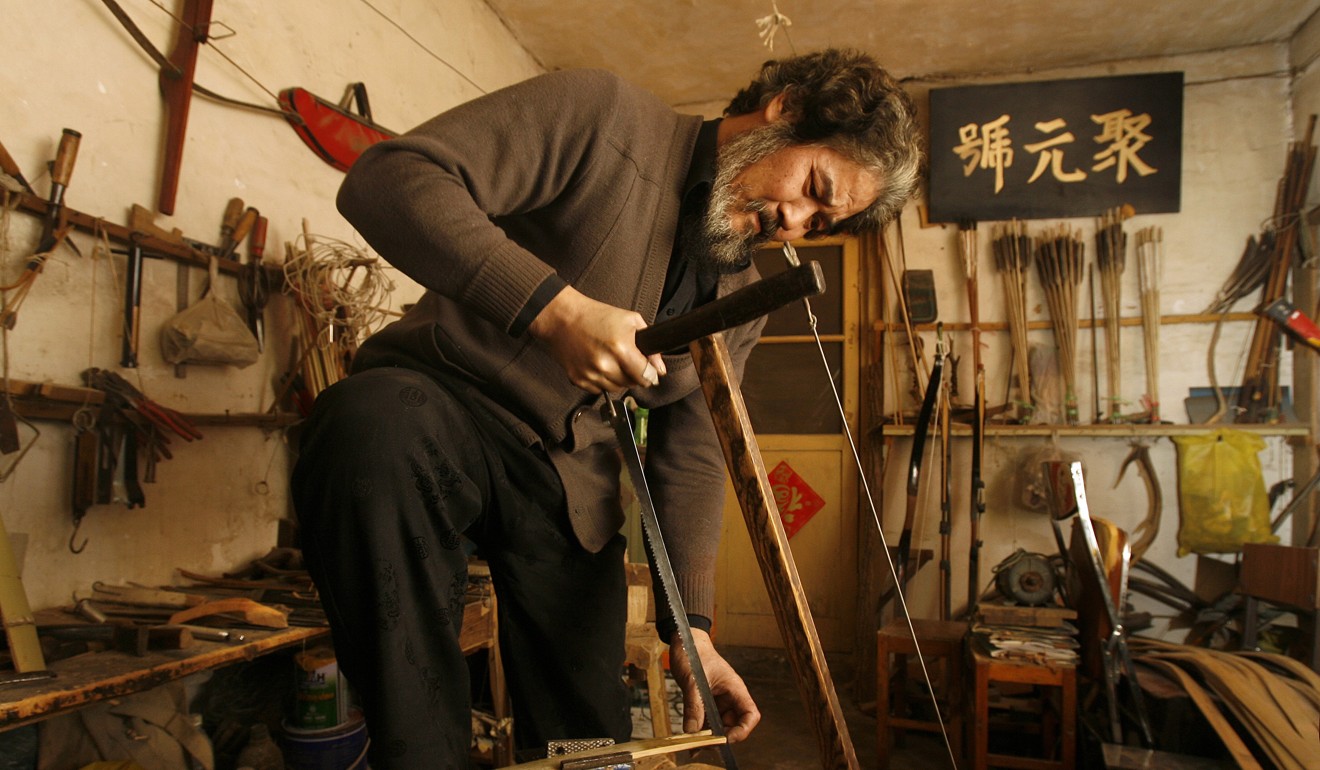
Yang Fuxi in his Beijing workshop in 2007. Picture: AFP
Secondly, there is Yang Fuxi’s *****ly temperament. “I don’t take to being ordered around,” he says. “If I don’t like the atti*tude of someone I’m working with, I won’t bite on my tongue. I’ll tell them directly and to their face.” He recalls arguments with policemen that sometimes turned violent during a stint as a taxi driver. “Working alone in this job is best suited to my character,” he adds.
Selby retired from the Hong Kong civil service in 2011. Today the 67-year-old is an adjunct professor in the department of industrial and systems engineering at Hong Kong Polytechnic University. “Xie Sufang helped us a lot in the early years,” Yang says. “He was a patron to my father. Then, through his inter*national contacts, he directed a lot of business our way.”
As convenor of the Asian Traditional Archery Research Net*work, for example, Selby worked with the Hong Kong Museum of Coastal Defence, in Shau Kei Wan, to stage the exhibition “Archery Traditions of Asia”, which ran for six years from 2003. Pieces for the display were ordered from Ju Yuan Hao; and Yang was invited down to participate in seminars and performances.
Crucially for Ju Yuan Hao, Selby advised Yang to increase his prices by at least 10 per cent each year. From a few thousand yuan 20 years ago, the company’s bows now sell for 30,000 (US$4,370) to 40,000 yuan for a basic model, and up to 100,000 yuan for the most elaborate.
Traditional bow making was very much a cooperative effort [...] When Yang Snr was reviving the craft, he had to do all the different operations himself, and many he’d never done before. So he had great difficulty
Stephen Selby
Yang says his customers can be divided into three camps: collectors, lovers of Chinese culture who will buy a traditional bow to hang on a wall; sportsmen, some even using his bows to hunt; gift buyers. “In an age where people basically have everything they need, buying a present is the hardest thing,” Yang says. “A traditional bow is a piece of rarity and distinction.”
Government officials, he says, sometimes buy his products to give as presents on trips abroad.
High prices have not just made Yang’s life more comfortable, they’ve also drawn more people into the trade. Yang’s 31-year-old son, Yang Yi, is among several apprentices he has trained. “I would say he has more patience and he’s better at concen*trating on a task than me,” Yang says. “But he doesn’t have my ability to endure hardship. That, unfortunately, is a short*coming common to his generation.”
Burly Yang Yi, however, compares himself favourably with his old school friends, many of who are now in office jobs. “I like the freedom of this job,” he says. “And I feel pride in keeping up traditional Chinese culture. It is a glorious thing.”
Yang Fuxi’s former apprentices are now among the dozen or so bowyers making traditional bows in the country. But can they resurrect the craft? Selby has hopes but also doubts. “Traditional bow making was very much a cooperative effort, with lots of craftsmen specialising in differ*ent parts of the bow,” he says. “When Yang Snr was reviving the craft, he had to do all the different operations himself, and many he’d never done before. So he had great difficulty.”

Archers in 19th-century China. Picture: Alamy
In the time of his grandfather, Yang Fuxi recalls that crafts*men who specialised in decorating finished bows were the high*est paid, with monthly earnings of 1.2 Mexican silver dollars, a common unit of currency in China at the time. That compared with about one dollar per month for workmen making bow components, and 0.7 dollars for those making arrows.
In the days when several bow-making workshops clustered together, Yang says, in addition to division of labour there was also healthy competition. “Workmen working together can learn from each other, correcting each other’s mistakes and learning from each other’s strengths,” he says.
“Reviving Chinese archery as a martial art is the key to the future,” says Selby, who is himself an archery instructor, and fluent in Mandarin and Cantonese. “The problem is that people are just focusing on competitive archery; trying to hit the target any way they can. I don’t think that is good enough to distinguish traditional Chinese archery from modern Western archery.”
Selby admits that some of the new generation of artisans are making excellent traditional ox-horn bows. One bowyer he singles out for praise is Gao Xiang, working in Anda city, in the northeastern province of Heilongjiang. The current waiting time for those who order from Gao is more than a year.
Selby also says that since the beginning of the century, the number of enthusiasts learning to shoot with traditional bows in archery clubs across China has grown, with about 10,000 individuals now practising the sport. As something of a purist, he questions the methods of these archers, pointing out that most do not practise the mental and physical techniques of a true martial art. And yet for the craft they are supporting, which appeared extinct two decades ago, the future now looks bright.




 Reply With Quote
Reply With Quote

